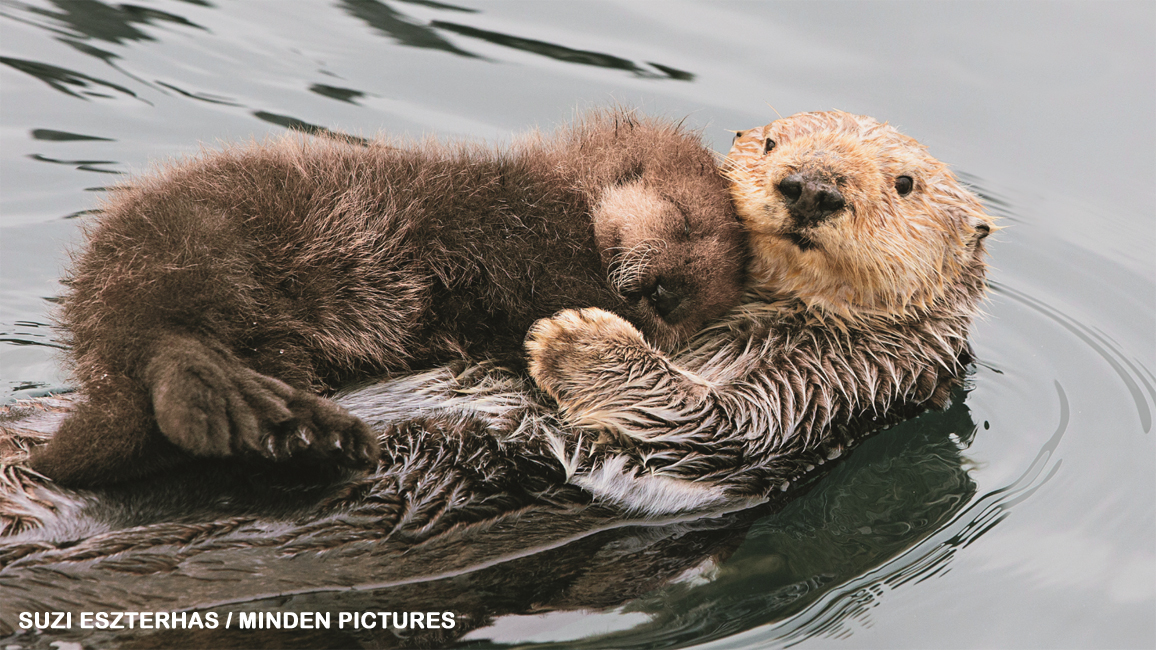
Saving Sea Otters
By Kathy Kranking; Photos provided by Minden PicturesThe best place for a sea otter pup is with Mom. But for orphaned or injured otters, help from humans is the next best thing.

Taking care of a little otter is a big job for a sea otter mom. She has to feed her baby, keep its fur clean, and protect it from danger. She also has to teach it how to swim, clean itself, and find food.
Sadly, sometimes sea otter moms get separated from their pups. A mom may be injured—perhaps by being bitten by a shark or hit by a boat—and unable to care for her baby. And pups can be swept away by strong waves and winds during storms.
Without its mom, a sea otter pup is helpless and can’t survive. Read on to see how pups in trouble get a little help from their human friends.

OTTER PROBLEMS
Sea otters need all the help they can get. The otters in this story live off the coast of California, where there were once as many as 20,000 of these adorable animals. But after people hunted them for years for their fur, the otters were almost wiped out. Today there are only around 3,000 sea otters in California. So every otter needs to be protected. And people who work at California’s Monterey Bay Aquarium are doing all they can to help.
BRINGING UP BABY
When the aquarium gets a call about a stranded pup, a rescue team heads out to find it. A pup may be floating helplessly in the water or sometimes even washed up on a beach. First the team tries to find the pup’s mother. But if they aren’t successful, they catch the pup and take it back to the aquarium. Then the hard work begins.
Taking care of a rescued sea otter pup is a round-the-clock job! Every few hours, the pup is fed a special milky formula from a bottle. In the wild, a sea otter mom spends hours a day grooming her pup. So, at the aquarium, workers give the pup lots and lots of brushing. Grooming keeps the pup’s fur clean, dry, and fluffed up so that it holds in lots of air. A sea otter pup can’t swim at first, so its air-filled fur coat is like a built-in floaty!

KEEPING OTTERS WILD
Whenever the rescue workers are caring for a pup, they wear special outfits to disguise themselves. That way, the baby won’t become too used to humans. Sea otters are wild animals, and they need to stay that way.
OTTER LESSONS
Normally, a sea otter pup will stay with its mom for six to eight months. During that time, she teaches it all the things it needs to know to be an otter. So, after a few months at the aquarium, a rescued baby is ready for the next phase of its care: It gets a substitute mom! One of the female otters that lives at the aquarium now “adopts” the pup. She will teach it things such as how to dive to find food, how to grab and eat a crab, and how to crack open shells of clams and mussels. After months of learning from its substitute mom, the young otter will be ready to be released back into the wild.
THE OCEAN NEEDS OTTERS
Since the otter rescue program began, the aquarium has cared for and released hundreds of young sea otters. Sea otters have an important job: keeping the ocean healthy. One way they do this is by saving the kelp forests where they and many other animals live. Kelp is a tall seaweed that grows from the sea floor. Trouble is, creatures called sea urchins love to eat it, and too many urchins can destroy a kelp forest. Sea otters help the kelp by eating up the urchins.
HOME AGAIN
On the big day, a young sea otter is put into a carrier and loaded onto a boat. Rescued sea otters are released into the ocean near the aquarium where other sea otters live. When the boat with the rescued otter arrives at the right place, the cage is opened. And the otter leaps into the water. It’s back home!
The otter has been fitted with a radio transmitter so aquarium workers can monitor it to see that it’s OK. After a lot of hard work and loving care, another sea otter has been saved!
















